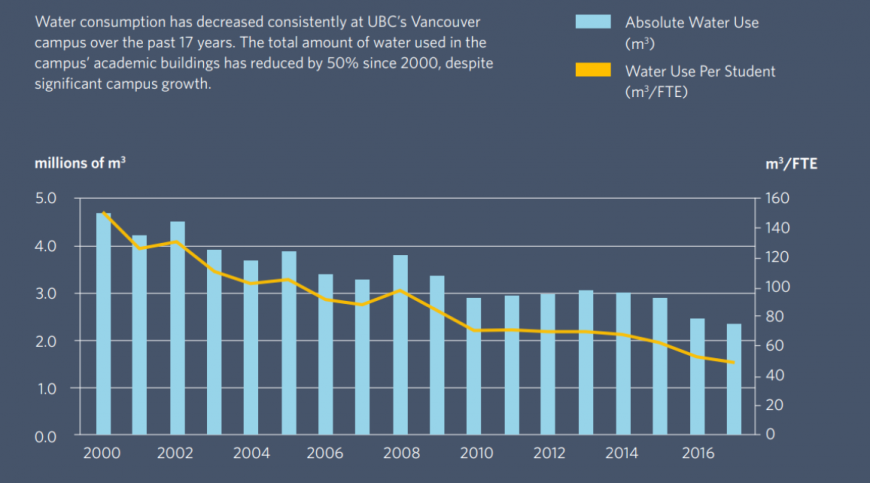In order to deliver on the Water Action Plan (WAP) goals and target, we have developed an Implementation Strategy that lays out how the commitments of the WAP will be put into motion.
The Water Action Plan Implementation Strategy as a whole explains the action areas that are required to achieve the WAP goals and objectives.
The main actions areas are:
- Continue to improve water efficiency of existing buildings by focusing on areas of higher impact such as:
- Once-through water use of lab and process equipment, and
- Cost effective retrofits of systems and fixtures.
- Improve UBC’s metering systems and processes to measure, monitor and report water use, to support better prioritization of conservation opportunities, and engage campus stakeholders in water conservation.
- Increase the water efficiency of landscape irrigation through more efficient and integrated systems, more effective system maintenance, and the development of more water-efficient and resilient landscaping practices that do not rely on potable water
- Continue to advance alternative water supply options such as rainwater capture, while updating guidelines to improve effectiveness of new systems.
- Encourage tap water consumption over bottled water consumption by promoting and increasing access to clean tap water.
- Develop and deploy communications and engagement programs to help users conserve water in high-impact areas. This involves collaborating with the University Neighbourhoods Association (UNA) and other key stakeholders.
Performance Metrics
The following chart shows how water consumption for the Vancouver academic campus has changed since 2000. A key indicator is the water use per student (yellow line), which considers UBC’s growth in enrollment.
